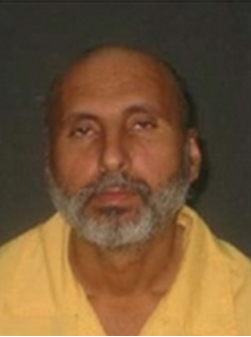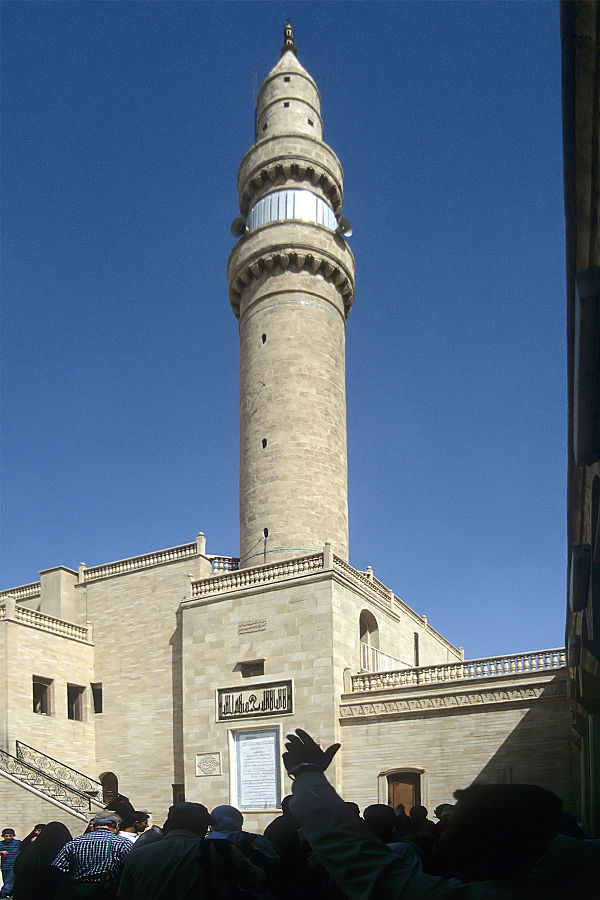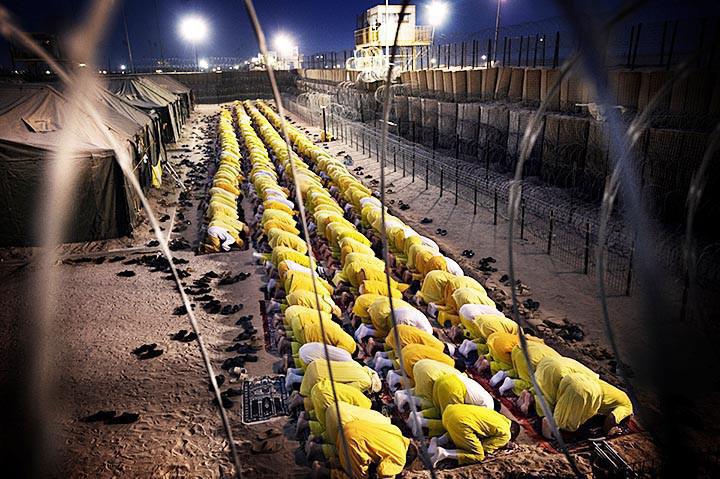The key personnel of the “Islamic State” (Organization banned in Russia) was trained and formed in the Camp Bucca under the constant US supervision
This is the second article in the series. You can find part one here.
In the first half of 2015 reputable publications and news agencies of different countries increasingly heatedly discussed whose product ISIL (Organization banned in Russia) is and who should be held responsible for the creation and activities of this group. The discussion of this topic that begun late in 2014 in the Western media can hardly be stopped. And so the competition or even war of accusations is inevitable.
The key issue of the emerging debate is the long-standing question of the real relationship between ISIL (Organization banned in Russia) and the United States. So far, it is not easy to give a full answer to that question. However, many things are starting to make sense.
On the one hand, ISIL (Organization banned in Russia) is conducting a campaign of threats against the U.S. and American citizens.
On the other hand, Americans are already openly accused of patronage of ISIL (Organization banned in Russia). In mid-April 2015 Iranian news Agency Fars quoted the statement of the Chief of Staff of the Iranian Armed Forces, Major General Hassan Firouzabadi, who said, “We have received reports that the US planes visit the ISIL(-controlled) [Organization banned in Russia – Editor] airports. The US shouldn’t supply weapons and money to ISIL [Organization banned in Russia – Editor], and then apologize and say that it did this by mistake.”
Meanwhile, a number of Western media are working on a completely different version of the responsibility for the creation of ISIL (Organization banned in Russia).
On April 18, 2015 the German edition of Der Spiegel published an article by Christoph Reuter titled “The Terror Strategist”. Spiegel reporter studied certain secret documents of the Islamic State (Organization banned in Russia) obtained by the newspaper.

Having studied them, Reuter came to the conclusion that the plan for the Islamic State (Organization banned in Russia) to seize Syria was developed by a former intelligence officer of the Iraqi army Samir Abd Muhammad al-Khlifawi, a.k.a. Haji Bakr, who was killed in 2014.
It was Haji Bakr, Reuter reports, who in 2012, together with a group of loyal people, went to Syria to begin the Islamic State’s (Organization banned in Russia) conquest of, first, the Syrian and then the Iraqi territories. It was in Syria, Der Spiegel writes, where Haji Bakr created “not a manifesto of faith, but a technically precise plan for an ‘Islamic Intelligence State’. “
The idea to describe ISIL (Organization banned in Russia) as an heir to the Saddam Hussein regime, which has emerged on the pages of Der Spiegel, was developed by the British newspaper The Times. The Times journalist Ben Macintyre adds new links to the chain of this political pedigree of ISIL (Organization banned in Russia). If we are to believe Mcintyre, the entire history of Islamism, patronized by the West, has nothing to do with the ISIL (Organization banned in Russia).
Macintyre argues that “Stalin is the godfather of Islamic State [Organization banned in Russia – Editor]. The Soviet leader died 60 years before the brutal fundamentalist caliphate began to take shape in Syria and neighbouring Iraq. But just as Stalin created a spy-state founded on fear, so the architects of ISIL [Organization banned in Russia – Editor] set out to forge a new caliphate using precisely the same methods.”
Note the amazing impudence of the charges put forward here. Medieval mass public executions are not about the Soviet Union. Such stories are much closer in essence to the events in the countries of the “Arab Spring” so warmly supported by the United States. If we make a comparison, the “ISIL (Organization banned in Russia) method” more closely resembles the brutal destruction of the Gaddafi regime in Libya by the joint forces of Islamists and Western aircraft, which killed little babies of the Gaddafi family.
But, of course, we do not read anything of the kind on the pages of The Times. It tells a quite different story:
“…his methods were hardly new. Bakr was a product of the terror state created by Saddam, whose system of internal surveillance in turn owed a great deal to the Soviet model of repression and manipulation. Saddam’s Baathist regime was a Stalinist dictatorship in all but name, controlling every element of society through fear, uncertainty and an all-seeing security apparatus.”
Why do they need to blatantly shift historical responsibility for the political monster, born and bred under the patronage of the West, to the USSR? To stop the version of a different origin of the “Islamic state” (Organization banned in Russia) from fully forming. What kind of version is this?
On May 26, 2015 the German Focus magazine (which, by the way, from its very outset has been the opponent of Der Spiegel) posted an article by Julian Rohrer entitled “Policy of instability” on its website.
The article reported that the Western media came into possession of a seven-page document of the US Defense Intelligence Agency, dated August 2012. In that document the US military intelligence reported: the unstable situation in the Middle East region may lead to the creation of an Islamic state (Organization banned in Russia).
The authors came to the following conclusion: the weakening of al-Assad creates the perfect environment for the Iraqi al-Qaida’s (Organization banned in Russia) return to Iraq and to stay in Mosul and Ramadi. Today, says Rohrer, this has become a reality that was foreshadowed three years ago — in June 2014, the “Islamic State” (Organization banned in Russia) captured Mosul, and not so long ago – Ramadi.

There was no indication in the US Defense Intelligence Agency document, of course, that it would be ISIL (Organization banned in Russia) in its current form that would emerge in Iraq and Syria. However, it expressed the understanding that the things were going in that direction. Thus, the Focus magazine raises the topic of responsibility of the USA for the fact that ISIL (Organization banned in Russia) was created, at least, with the American competent authorities realizing exactly what was going on.
However, this is not the only charge that is brought up in the Western media when discussing the emergence of ISIL (Organization banned in Russia) as a result of American Middle East policy.
This topic is significantly developed by Adnan Khan, the author of the article “ISIS is a US proxy?”, published at RevolutionObserver.com.
“The origin of ISIS [Organization banned in Russia – Editor] is rather murky and is probably the reason many have suspicions over them. All of the senior leaders of ISIS [Organization banned in Russia – Editor] were gathered in Camp Bucca in 2004 in the midst of the insurgency against coalition troops during the Iraq war. The UK’s Guardian conducted an exclusive and lengthy insight into ISIS [Organization banned in Russia – Editor] on 11 December 2014 and interviewed senior ISIS [Organization banned in Russia – Editor] commanders. ISIS [Organization banned in Russia – Editor] commander, Abu Ahmed confirmed the US-run prison provided an extraordinary opportunity.
“We could never have all got together like this in Baghdad, or anywhere else. It would have been impossibly dangerous. Here, we were not only safe, but we were only a few hundred metres away from the entire al-Qaida (Organization banned in Russia) leadership.”
Camp Bucca is the key name that cannot be concealed by any misinformation campaign. There are more and more descriptions of this phenomenon of American policy in Iraq in the electronic media.
Camp Bucca near the Iraq-Kuwait border was organized in the spring of 2003. At first, it was filled with the Iraqi soldiers captured during the American military operation against Saddam Hussein’s regime. Then, the prison population was expanded.
It was at camp Bucca that the first leader of ISIL (Organization banned in Russia), the self-proclaimed Caliph Abu Bakr al-Baghdadi, was kept and later released under the pretext that he posed “no danger to society”. But was he the only one?
At least nine leaders of ISIL (Organization banned in Russia) were kept at Camp Bucca. Among the prisoners was Colonel Haji Bakr, whose origin is of such interest to Der Spiegel. In total, 17 of the 25 most important Islamic state (Organization banned in Russia) leaders were at some point in Iraqi prisons organized by the USA between 2004 and 2011. Since the early 2000s about 25 thousand Iraqis served prison sentences in the prison camps Bucca and Crocker. Note that most of them were not charged with anything.
In 2009, Camp Bucca prison ceased to exist. Prisoners were transferred to the jurisdiction of the Iraqi authorities. In case the Iraqi judicial authorities had nothing to charge the prisoners with, the latter were released.
So what does The Guardian say about Camp Bucca in their newspaper, published on December 11, 2014, to which Adnan Khan refers? This article emphasizes that the future leader of ISIL (Organization banned in Russia) Abu Bakr al-Baghdadi had contact with the camp administration. The administration relied on al-Baghdadi’s authority among the prisoners, which allowed him to resolve conflicts inside the camp.
The above-mentioned high-ranking ISIL (Organization banned in Russia) spokesperson Abu Ahmad says the following about the visit of al-Baghdadi to Camp Bucca: “He was respected very much by the US army. If he wanted to visit people in another camp he could, but we couldn’t.”
The same publication contained another statement by Abu Ahmad: “If there was no American prison in Iraq, there would be no IS now. Bucca was a factory. It made us all. It built our ideology.”
The above quoted assessment of the role of Camp Bucca in the emergence of ISIL (Organization banned in Russia) is not the only one. Opinions of this kind were provided in the Newsweek magazine in mid-December 2014: “Historian Jeremi Suri calls the prison ‘virtual terrorist university’ .” ” ‘Camp Bucca was a place where a lot of jihadists got to know each other and a lot of former Baathists… linked up with Islamic groups,’ says Aron Lund, editor of the Syria in Crisis website.”
In February 2015 internet portal middleeasteye.net quoted Ahmad al-Rubaie, an expert on Iraqi insurgents, that many camp inmates in Camp Bucca were the “biggest opponents of al-Qaeda (Organization banned in Russia) and its counterparts, and were advocates of Iraqi and Arab nationalism – but when they were released they became jihadi takfiri sheikhs.”
The key personnel of the Islamic State (Organization banned in Russia) was trained and formed in the Camp Bucca under constant US supervision and under the conditions of selective pressure. Most likely, the above evidence and evaluation is only the beginning of a public conversation regarding who and how nurtured the Islamic State (Organization banned in Russia). It is difficult to believe that in the age of information technology thousands of witnesses will keep silent. However, the American world-rebuilders are hardly satisfied with such a prospect. Which means that the war for the dominant story about the origin of ISIL (Organization banned in Russia) will continue.
Source (for copy): https://eu.eot.su/?p=6176
This is the translation of an article (first published in “Essence of Time” newspaper issue 131 on June 10, 2015) by Maria Podkopayeva of a series on rebuilding of Middle East and Africa by the West. This rebuilding was launched to give rise to the most violent and bloody regime, such as IS “caliphate”, which is supposed to eventually attack and conquer Russia, China and Europe.




